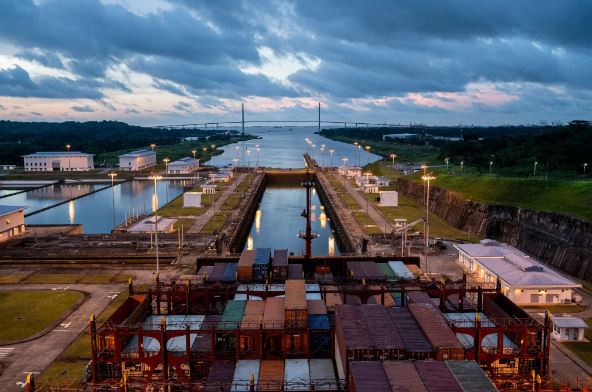The Panama Canal is facing significant challenges due to low water levels, leading to a reduction in the number of ships allowed through, which, in turn, disrupts global supply chains and increases transportation costs.
Despite the decrease in ship traffic, the Panama Canal Authority has not experienced financial strain thus far. This resilience can be attributed to the authority’s implementation of substantial toll increases before the water crisis began. Moreover, shipping companies have been willing to pay hefty sums in special auctions to secure passage through the reduced number of crossings.
In the twelve months leading up to September, the canal’s revenue surged by 15 percent to nearly $5 billion, despite a 1.5 percent decline in tonnage shipped through the canal.
While the exact earnings from auctions remain undisclosed by the Panama Canal Authority, auction fees have been reported to reach as high as $4 million per passage last year. These fees significantly contribute to the canal’s financial stability, even doubling the regular toll costs during quieter shipping seasons.
However, if delays persist and costs continue to rise, shipping companies may seek alternatives to the canal. Last year, some ships diverted to the Suez Canal for the Asia to East Coast route, despite it being a longer journey that consumes more fuel. Additionally, some vessels opted for the longer route around Africa following Houthi attacks in the Red Sea.
The decline in rainfall last year severely impacted the canal’s water supply needed for operating locks that raise and lower vessels. Climate experts warn that such water shortages may become more frequent due to climate change exacerbating dry spells.
To address water conservation, the canal authority gradually reduced the number of daily passages from 36-38 vessels to 22 by December. However, unexpected rainfall and conservation measures enabled an increase to 27 passages per day.
Despite operating below normal capacity, the canal remains financially stable. Analysts predict that revenue for the upcoming twelve months will remain steady, largely due to toll increases. The cost of shipping through the canal is expected to rise from $6 to $10 per ton.
This financial stability is crucial for Panama’s government, which heavily relies on canal revenues. However, it also highlights a dependency that may not be sustainable in the long term. The government is facing scrutiny over its deficit from international bond market investors.
To address the long-term challenge of lower rainfall, the canal authority plans to construct a new reservoir to supply additional water, enabling 12-15 more passages per day. This project is pending approval from lawmakers and is estimated to take four to six years to complete.
Despite the challenges, there is widespread recognition in Panama of the canal’s importance. All presidential candidates have expressed support for the reservoir project, underscoring the critical role the canal plays in the country’s economy and infrastructure.
In navigating these challenges, the Panama Canal remains a crucial artery of global trade, adapting to environmental shifts and ensuring the smooth flow of goods across continents.

